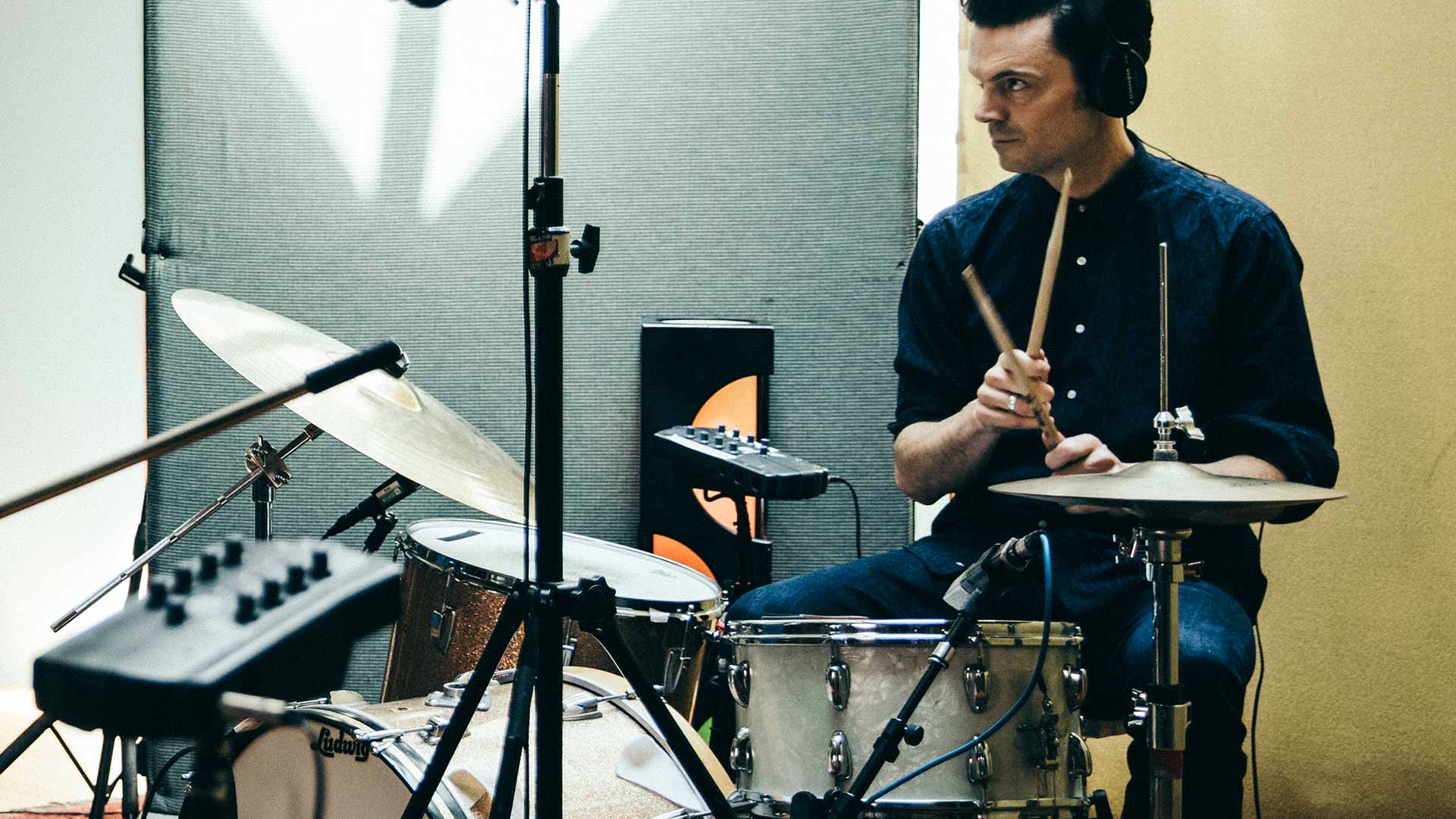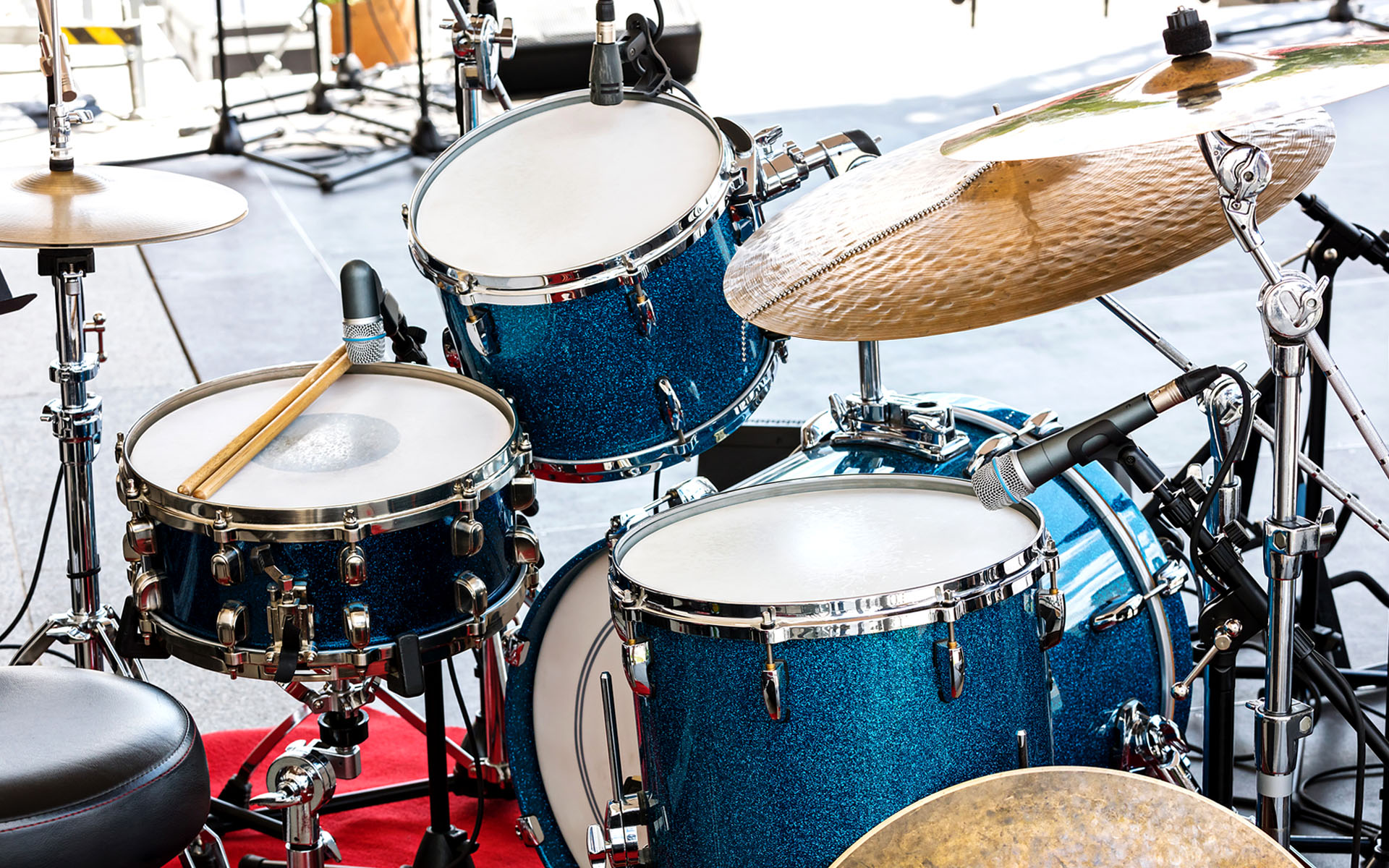The following is excerpted from the Berklee Press book Beyond The Backbeat From Rock & Funk to Jazz & Latin by Larry Finn.
Learning a New Beat
Whenever you are learning a new beat, whether it is by reading it or by listening to it, follow these guidelines.
1. Practice slowly. Working at a slow tempo helps you to develop muscle memory.
2. Break the beat down. Try just the ride cymbal and kick drum together, and see how they relate. Play the right-hand and left-hand parts on a single surface. For example, you might see this beat:
Simplify the part by playing both parts on a single surface (in this case, the snare):
3. Put all the elements of the beat together, and repeat it, over and over. Practice the beat without any added fills until it is very solid.
Notation Key
The notation examples in this article follow the Percussive Arts Society standard. Notes with stems pointing upwards are played by your hands, those pointing downwards by your feet. Parentheses ( ) indicate optional notes.
Rock/Funk
Play a basic rock/funk beat at♩ = 60–120.
Basic Rock/Funk
This beat can be used for either rock or funk.
Style depends on the whole band, not just the drummer. If the bass plays a driving eighth-note line, the basic rock/funk beat will sound more like rock. If the bass plays a lighter, sixteenth-note feel, the same beat will sound more like funk.
Rock
Rock can be more raw and less syncopated than funk. It often has an even-eighth-note feel. Play a basic rock beat at♩ = 60–120.
Basic Rock Beat
Funk
Funk is often approached with more finesse than rock. It often has a sixteenth-note feel. Play a basic funk beat at♩= 60–108.
Basic Funk
Rock Shuffle
Shuffle beats are usually based on an eighth-note triplet feel. Play a basic rock shuffle at♩ = 80–144.
Basic Rock Shuffle
Play a half-time shuffle at♩ = 80–144.
Half-time Shuffle
Further Towards Rock/Funk
Inter-dynamics
Not all rock/funk tunes are loud. What matters more than the number of decibels is the interdynamics—the relative dynamics of each drum compared to the rest of the kit. In rock, the snare is often louder than the hi-hat, whether in a soft rock ballad or a hard, driving tune. In other styles, the snare is often relatively quiet. In rock, the hi-hat tends to be more open and more “driving” than in funk. Funk generally has a tighter, quieter hi-hat.
Mastering the inter-dynamics between your drums is the key to playing a wide stylistic range.
Notation: vs.
Shuffles may be notated in either or
. They are played exactly the same either way.
Basic Rock Shuffle
If music in is marked “shuffle,” play eighth notes as triplets
This beat sounds the same as the other Basic Rock Shuffle, but is is written as straight eighth notes.
Basic Rock Shuffle
Similarily, if you see “hip-hop,” “go-go,” or “swing sixteenths,” play sixteenths with this feel:
Variations
Rock/Funk
Practice these beats beginning at♩ = 60. Gradually increase the tempo.
Practice these beats at♩= 60–120.
STUDY DRUMS WITH BERKLEE ONLINE!












